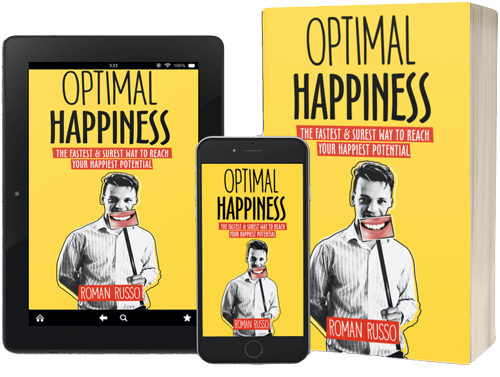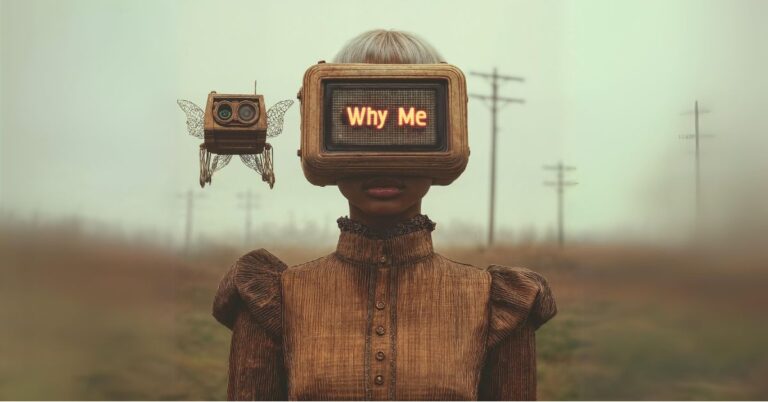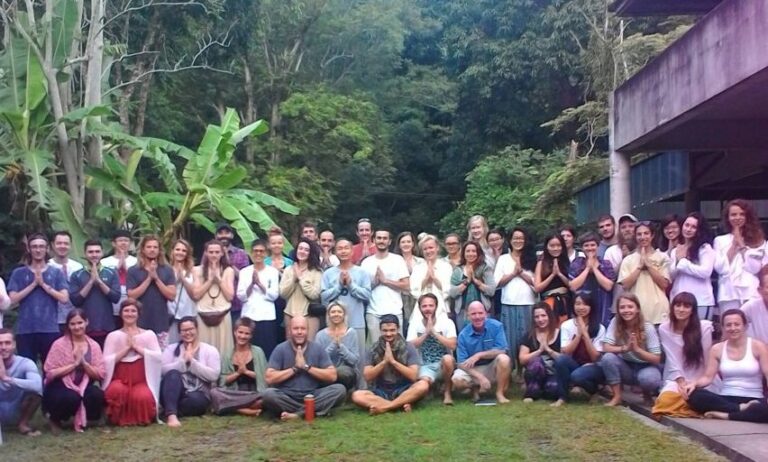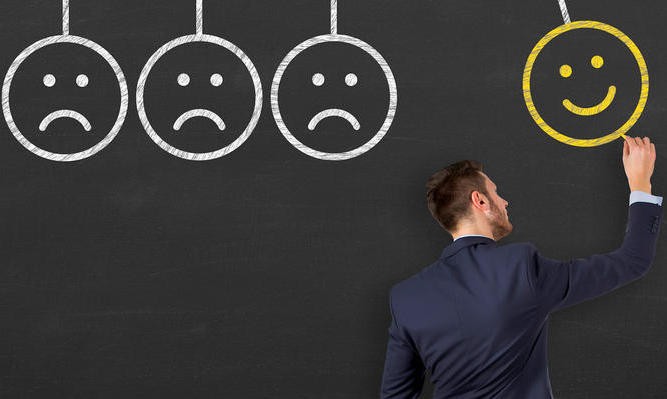
Welcome to the United States of America, the land of opportunity, freedom, and the American dream, the #1 largest economy in the world in terms of GDP ($28.78 trillion USD in 2024) and GDP per capita ($66,682.61 in the same year), the economy is so significant that any economic effects ripple across the rest of the world.
However, despite all these incredible factors, the USA is ranked as the 24th happiest country in the world according to the 2025 World Happiness Report (WHR). It has been progressively falling in the happiness index over the years, with some experts claiming that things will get worse before they get better.
Naturally, the USA presents an intriguing case study for happiness analysis, as there is simply so much to discuss, and as we will see, it challenges our long-held belief that more wealth creates more happiness. Indeed, if money and happiness were more closely linked, the USA would likely be much happier.
As a happiness coach, I will analyze happiness in the USA from the perspective of what it would take to make the USA the #1 happiest country in the world. And while, as we will see shortly, and contrarily to make political claims, this may not be entirely realistic. In turn, it raises interesting points to consider when thinking about our personal and collective happiness.
The End of the Golden Age
Personally, I appreciate the ideals of the “land of opportunity,” freedom, and the American Dream. These concepts give people something to aspire to and foster a nationwide sense of mission, purpose, and unity. And while the USA has achieved remarkable things over the centuries, much of its international success belongs to a different era—driven by self-interest, the global context of the time, and, in some cases, less benevolent actions.
We can also argue that, although the USA remains highly relevant on the global stage, its golden age ended decades ago. The country has gradually been overtaken by others that have caught up—or even surpassed it—in certain aspects of international dominance. The USA is still a global powerhouse in military strength, financial markets, and overall market size, but it is no longer the sole superpower. It now faces competition from other nations that have advanced in business, quality of life, and overall happiness.
While the USA seeks to reclaim its former glory—and politicians promise it is possible, even taking steps to restore some of that influence—the American Dream has, in many ways, become a global aspiration.
This isn’t to diminish the USA’s importance, as for most countries and companies, it remains the most advanced and lucrative market, making it essential for trade and collaboration. However, as the World Happiness Report confirms, there is more to life than just wealth. The USA must now act more strategically on the international stage. It is no longer a monopoly and cannot dictate global events based solely on its name—it must adapt accordingly.
#24th Position on World Happiness Report (WHR)
The World Happiness Report (WHR) is an annual publication that ranks countries based on their happiness levels. It uses various points of data to determine these rankings, including GDP per capita, social support, healthy life expectancy, freedom to make life choices, generosity, and perceptions of corruption.
The report is produced by the Sustainable Development Solutions Network (SDSN) and has been published annually since 2012. It aims to provide insights into how different countries are performing in terms of the well-being of their citizens and to inform policy-making.
The WHR makes a three-year average when calculating the position of countries, meaning that we won’t know if the overall decision-making of the current president of the USA, Donald Trump, will have a better or worse result on the current 24th position of the USA until at least the end of his term.
Additionally, I thought it would be interesting to list the other countries which are today considered to be, on average, happier than the USA, in order from the happiest to less so:
- Finland
- Denmark
- Iceland
- Sweden
- Netherlands
- Costa Rica
- Norway
- Israel
- Luxembourg
- Mexico
- Australia
- New Zealand
- Switzerland
- Belgium
- Ireland
- Lithuania
- Austria
- Canada
- Slovenia
- Czechia
- United Arab Emirates
- Germany, and
- United Kingdom
The USA still outperforms countries like France, Spain, and Singapore, which is an interesting point for comparison. Notably, despite its small size, Singapore is one of the wealthiest countries in terms of GDP per capita. It is also highly developed, beautiful, and safe, yet it ranks only 34th in the World Happiness Report, which further underscores that economic prosperity alone does not guarantee happiness.
Additionally, over the years, the USA held the following positions in WHR ranking:
2012: 11th place, its highest position since the inception of the report.
2020: 18th place.
2022: 16th place.
2024: 23rd place.
2025: 24th place, the lowest-ever rank.
Digging deeper into the data, we can explain the decline of the USA because of:
Social Isolation: There has been a significant increase in the number of people dining alone in the U.S., which has risen by over 50% since 2003. This trend indicates growing social isolation, which negatively impacts overall well-being.
Mental Health: Declining mental health among Americans is a major concern. The WHR highlights a need for policy changes that address mental health issues, which have been exacerbated by factors such as social isolation.
Generational Divide: There is a notable generational divide in well-being. While older adults (aged 60 and above) in the U.S. report higher levels of happiness, there has been a sharp decline in well-being among adolescents and young adults. This generational gap contributes to the overall decline in the country’s happiness ranking.
Trust and Social Cohesion: Social cohesion and trust in institutions have been dropping in the USA in recent years in a significant way, as the political arena has created a big division among people, as well as affecting trust in institutions, contributing to its drop in ranking.
Of course, it is worth noting that the WHR provides one ranking as to how the USA is perceived on the international stage in terms of its well-being and happiness, focusing predominantly on socio-economic factors, such as the already mentioned size of the economy, which again just provides another sucker punch to the USA, as it is one of the biggest economies in the world.
In fact, as a happiness coach, if I had to create a ranking from scratch, I would focus on a completely different set of variables that take into account how people feel, moment by moment, day-to-day, and year-to-year, such as how much people smile, feel anxious, or depressed, etc.
In my ranking, I’d like to see countries like Canada, Thailand, and Bhutan taking center stage, as they are famous for being countries where people actually feel happy. In accordance with the WHR, these countries are often overshadowed by less deserving counterparts because of factors like purely economic considerations.
Inequality
Given that the USA is one of the richest economies in the world, it is also a country with one of the largest wealth disparities. This suggests that one reason we might expect the USA to be happier is if there were more equality in the first place.
So yes, the rich are happy, but what about everyone else? After all, one argument I’ve heard in favor of making a country (any country) a happier place for its citizens is by focusing on the least happy people. In the USA, this would be a rather significant task, as there are many unhappy minorities.
As such, some rich and super-rich people make it seem like the country is far richer for the average individual than it really is, which is exemplified by the large number of poor or even homeless people who can be seen in every major city in the USA.
At the same time, it is also true that most people already have more than they ultimately need to be well off materialistically. This is also true for many of these “less happy” minorities, suggesting two things. First, at a certain point, people need to stop seeking wealth for its own sake and just accept what they have is enough, that they are enough, and start focusing on other pursuits in life that are more conducive to happiness.
On the other hand, over the vast majority of the last 300,000 years, which is considered the natural span of human evolution, human beings lived in rather homogeneous societies where everyone was quite similar and had approximately as much as everyone else. Consequently, this is why we don’t like to see inequality, because it seems like we are falling behind and therefore at risk of dying. However, our modern society, especially that of the USA, is full of inequality and therefore unhappiness, which is one reason why it is so hard to be truly happy in the USA.
Declaration of Independence and the Pursuit of Happiness
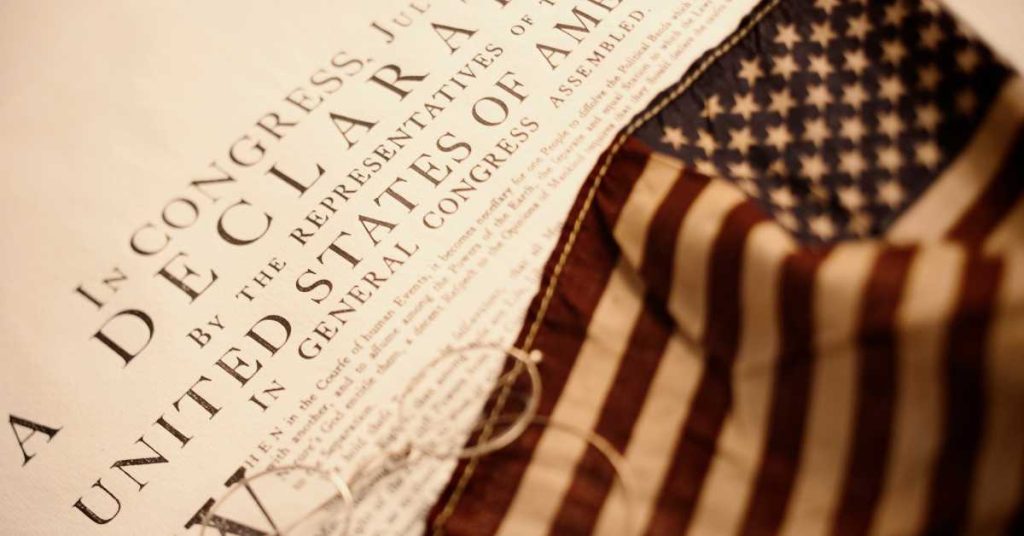
“We hold these truths to be self-evident, that all men are created equal, that they are endowed by their Creator with certain unalienable Rights, that among these are Life, Liberty and the pursuit of Happiness.”
One of the most important documents in the history of happiness, and in U.S. history overall, is the Declaration of Independence, which gives everyone the unalienable right to pursue happiness. However, since most people don’t know what happiness is, they also don’t know what to aim for or how to get it, which makes this whole conversation about the pursuit of happiness rather blind and pointless.
I mean, we did try to be collectively happy, but we ended up in the current mess we call society today, which is great in that it is a more globalized and technologically advanced society. But at the same time, we have a mental health crisis, destruction of species, wars, and a million other problems we all know about, so I won’t mention them here.
As one saying goes, “What got us here won’t get us there” or “you can’t solve a problem with the same energy that created it” meaning that to solve our current problems, we need to think differently. Luckily, we have enough data to make an educated guess as to what we are doing right and wrong, to help make the world in general, and the USA in particular, a better and happier place.
Of course, in line with the goal and mission of this blog, I have defined happiness in a way that we can all agree upon, as to eliminate any ambiguity surrounding the words from the Declaration of Independence and allow me to make concrete suggestions on how to increase global happiness levels. In many respects, this is what I am doing in this current blog post, as well as in my blog and coaching practice overall.
For example, as many economies are already doing (although at a very slow rate), they are moving away from Gross Domestic Product (GDP)-focused economies, where economic variables dictate what countries focus on, to Gross National Happiness (GNH) metrics, which measure how happy a country is and focus on these metrics.
Still, if happiness is so important to us to the degree that it is written into the Declaration of Independence, and if some thinkers like Aristotle consider happiness the #1 goal in human life, then why is it so hard to be happy?
Ultimately, as a happiness coach and blogger, I strive to answer these questions to the best of my ability. My focus is on what we would truly need to do to make the USA the #1 happiest country in the world. However, we already recognize that the road to happiness will be long, challenging, and primarily paved with good intentions. In reality, this goal may seem somewhat unrealistic, as evidenced by the significant changes the USA would need to undergo, as in many respects, the country has been on the wrong path, at least concerning “the greatest happiness for the greatest number” of its citizens.
Freedom vs. Social Security
The USA is a country of freedom and opportunity, a place where everyone can pursue the American dream, and where many people actually achieve this goal. At the same time, this only happens for a very small number of people, which is why, like Hollywood, the USA is as much a country of the American Dream as it is of broken dreams.
And while people who make it often say that those who didn’t are less smart, capable, motivated, visionary, etc., it is also true that in a truly happy society, people would naturally be happier and more prone to success, as their success would be much more incentivized and guaranteed by the state.
I’m thinking, of course, of Scandinavian countries, where “freedom” is not as pronounced as “social security.” This means that while in the USA people pay lower taxes and have fewer laws preventing them from becoming extremely successful (let’s call these ‘freedom laws’) Scandinavian social security systems essentially guarantee that everyone is happier on average by reducing the gap between the extremely rich and poor.
Of course, unlike communism, which also promised equality and equal distribution of wealth among citizens but was proven again and again to be a very poor political ideology, at least from the perspective of “the greatest happiness for the greatest number,” the current freedom-based economy in the USA offers the most benefits to an elite minority of people.
As such, life is good if you are rich, as you pay less in taxes and are offered greater financial freedom. At the same time, by paying less in taxes and having less regulated markets, less wealthy people are also less protected, meaning that while the life of wealthy people can indeed resemble something utopian, the life of less wealthy people often resembles something much less secure and easy to enjoy.
At the same time, if we are to suggest this in the USA, all hell will break loose, even among the less wealthy citizens who don’t have as much as everyone else. For a number of reasons, they will defend their patriotic right to fight for the interests of the rich, I mean for their country, even if they have to suffer and die in the process.
Work Culture
New York is a great place to be, offering significant financial opportunities. However, it is also a place where many people feel financially strained because the cost of living is so high, even compared to the rest of the country and the world. There are many homeless individuals who struggle to make ends meet in this economy. Ironically, they might achieve better financial stability if they chose to relocate.
Of course, to succeed in New York (and the USA overall), one needs to embrace the “hustle” culture, often working over 40 hours per week, with some people working as much as 50, 60, 70, or even 80 hours per week. At the same time, happiness research indicates that a relaxed mind is both happy and productive, often outperforming those who work more.
Furthermore, I often ask people, “Do you work to live or do you live to work?” Of course, in many cities in the USA, people often feel they don’t have a choice and are compelled to work, as otherwise, they might not even be hired. However, this issue seems to be more pronounced at the national level in the USA rather than globally, with probably Japan and a few other places being worse off than the USA in this regard.
Racism
This isn’t by any means news, as financial, social, racial, gender-based, immigration-related, and other divisions are quite accentuated in the USA, in many respects even more so than anywhere else in the world.
However, as one economist explained it, “It’s the economy, stupid.” If we can see other human beings as somehow different and inferior to us, then we can justify exploiting them, giving more money to certain people while keeping other, less deserving ones discriminated against and overall poor.
Of course, the issue of racism is far more complex than mere economic discrimination and exploitation. It is deeply embedded in historical, social, and cultural systems. Racism intersects with power structures, institutional practices, and individual biases, shaping opportunities, perceptions, and outcomes for marginalized groups. It manifests not only through overt acts of hatred but also in subtle, systemic ways—such as unequal access to education, healthcare, and justice—that perpetuate disparities across generations, reinforcing cycles of division and mistrust among different groups. Addressing racism requires a mutual effort to confront the issues that both groups have with each other, bringing them closer together rather than driving them apart, as is often happening today.
Or, as Homer Simpson said:
Food and Health
The American diet is notorious for being one of the unhealthiest, as its citizens are consistently ranked among the most obese. This is a serious problem, as our health significantly affects our overall happiness and well-being.
At the same time, U.S. markets are dominated by industries that prioritize their own profit over the well-being of their citizens. While this is true in other parts of the world as well, due to regulation, market trends, or culture, it seems to be much more pronounced in the USA.
In practice, this means that the free-market model does not always serve the best interests of its citizens. This is exemplified by the higher amounts of sugar, salt, fats, and unhealthy chemicals in people’s diets, as well as the higher prices for fruits and vegetables, which are said to be essential for a healthy diet. These factors make it much harder for U.S. citizens to choose healthier options, which helps explain why so many people struggle with their overall health.
Similarly, the healthcare system isn’t doing much better. The USA is notorious for its exorbitant healthcare prices, the absolute need for insurance, and how insurance companies often do everything in their power not to pay out claims. Again, while this is true for the rest of the world, it seems to be much more prevalent in the USA.
Education System
If we are discussing healthcare, we must also address education in the USA, as while the USA has one of the most expensive education systems, it is by no means the best in the world.
Here, we need to set aside the fact that education in most countries is severely outdated. However, the USA adds an extra twist by emphasizing how expensive it is and how relatively subpar it is compared to other countries in the developed world. It provides a seemingly necessary credential for a questionably important level of education, all while putting most of its students into debt for years to come, with debt being negatively correlated with happiness and well-being.
Of course, personal debt is a major issue in the USA overall, with people taking on debt to pay for all sorts of things, which provides the temporary pleasure of being able to afford something. However, the dopamine associated with these purchases often fizzles out relatively quickly. Meanwhile, the payments, along with incremental interest accumulates, putting some people in rather uncomfortable and certainly unhappy states for years to come.
This isn’t to say that all debt is bad. Of course, we can even say it is necessary—for example, to afford the aforementioned education. However, especially in the USA, people often do not take on debt in the “right” way. They frequently buy things they don’t ultimately need to impress people who ultimately don’t care, only satisfying short-term happiness while becoming much unhappier in the long term.
Guns, Violence, and Military
While writing about schools, I couldn’t help but remember all the mass (school) shootings that are notorious in the USA. These incidents have led some schools to resemble fortresses or prison camps rather than the open playgrounds where students should be able to enjoy themselves.
This situation, of course, stems from the USA’s affinity for guns. People—or rather, politicians, or more accurately, those who profit from manufacturing guns—do not want to relinquish such a lucrative market and are doing everything in their power to maintain it.
This issue permeates every part of society, including the schools, as well as the police force, with some police units resembling small armies, equipped with enough firepower to start a small war. This is not to mention dealing with any sort of unrest in a rather violent way, as police are trained to always be ready to confront the potential firepower that some citizens possess. This makes an innocent person a potentially life-threatening encounter with which they must deal accordingly.
Moreover, given the high incidence of gun-related problems and other socioeconomic issues such as immigration and the drug war, the USA also faces a significant prison problem with some estimates suggesting that one-third of all prisoners worldwide are located in the USA. Here too, the U.S. prison system is notorious for being a very lucrative business, and stakeholders are often incentivized to increase their prisoner population, for example, by lobbying governments to enact more gun-promoting laws or deal more severely with potential criminals, whoever they may be. These actions promote insecurity and violence, which are the opposite of happiness and well-being.
And the kicker is that the USA spends more money on its military every year than the next nine biggest military spenders combined. This unprecedented level of spending is so high that it is said the U.S. military is in a race with itself to outmatch its own capabilities.
Here too we find one of the most lucrative markets in the world: the U.S. military. It is so powerful that even U.S. politicians from both sides often fear challenging it, worried about public and private backlash and the potential for the military to push back against its own government in order to keep securing lucrative contracts. This dynamic replaces security, happiness, and well-being with a pervasive state of insecurity and fear.
Politics
I once read that a good and healthy political environment is one that is rather boring, where nothing is happening, and nothing is worth mentioning, as citizens go about their business, considering every other worldly concern but politics.
I mean, sure, the world is an imperfect place, and there is always something to do and consider, so no political environment will be 100% quiet, which is why there will always be someone screaming, “Let’s go back to the good old days,” “The other party is doing everything wrong,” and “I can do a much better job if you let me.”
Still, I hope we can all agree that, especially lately, politics in the USA has not been a quite ordeal, with U.S. political news constantly seen even outside the USA, often overshadowing wars and other international news. More often than not, it resembles some sort of soap opera or Brazilian drama rather than the boring environment I was writing about.
So yes, the USA is a big economy, and because of its size, many local U.S. decisions have a significant international impact. However, USA politics are somehow especially polarizing, meaning there is a great deal of infighting between the two major political parties, which are often at each other’s throats, frequently fight for power for its own sake, creating a lot of division, misinformation, and animosity between the parties and their supporters. I’m referring, of course, to the right or left, Democrats or Republicans, and red or blue. This division is often felt most acutely during election times, when political candidates almost go to war with each other, dividing the country in half.
Donald J. Trump
And one of the loudest personalities in a while is the 45th and now again 47th President of the United States, Donald J. Trump, was sworn into office on January 20, 2025. His presidency has come with a lot of turmoil, creating significant division both at home and internationally.
Here, some people would say that he is right and necessary, as being the 24th happiest country in the world is the direct result of previous presidents not doing what is right. Others are saying that with him, the country will fall even further into a depression, which is essentially a much lower position in the WHR.
Again, WHR is a statistic that averages countries’ well-being over a period of 3 years, so to avoid any additional speculation over who’s right or wrong, we will say that only time will tell who is right.
Law and Order

Sure enough, for all its rhetoric about being a land of freedom, the USA is also a country where the legal system is so expansive and litigious that almost any misstep—real or perceived—can land you in court. Lawsuits have become an industry in their own right, a sprawling machine that thrives on disputes, grievances, and the constant threat of legal repercussions. This culture of litigation doesn’t just resolve conflicts; it fuels anxiety and stress, forcing people to second-guess their every action, lest they become the next target.
Yet, despite the pervasive fear of legal consequences, there’s no shortage of excuses to turn on one another. Whether it’s over minor slights, business rivalries, or personal vendettas, the legal system often becomes a weapon rather than a shield, deepening divisions and eroding trust in a society that claims to value freedom above all else. The result is a paradox: a nation that champions liberty but leaves its people walking on eggshells, always looking over their shoulders.
Tipping
Tipping is perhaps one of the least crazy things happening in the USA, which affects people’s happiness, but it is still negatively correlated with overall well-being, as everyone seems to suffer because of this practice. Clients are unhappy because they have to stress over how much they have to tip. Waiters’ well-being is definitely associated with tipping, so yes, they care a lot about it. Management loves happy clients, so they prefer less stressed environments.
As such, studies have concluded that two similar restaurants, one with tipping and one without, the one where the salary of employees is already added to the bill and no tipping is considered to be a happier place.
Of course, most restaurants or other places where tipping is normal have cultural and historic reasons to maintain this practice, but so does the USA, which is full of things that people are doing that make the population progressively less happy.
Mental Health in the USA
If you’ve ever heard of the mental health epidemic, you’re right on the money. In the USA, mental health is a daily struggle, with many people openly discussing their mental health, mental illnesses, stress, anxiety, depression, and other related negative emotions that, naturally, people don’t want to experience.
To me, this is quite interesting, as when I first heard about the emotional struggles of the mind, I thought it would be something easy to overcome. I mean, it’s our mind, and we are in control of it, right?
Of course, when I was around 25 years old and experienced my major depression, which led me to start writing this blog, I realized that, as is the case for most people, it’s not a walk in the park as I originally thought.
Of course, after reviewing all the above facts, it’s hardly surprising—indeed, it’s almost self-evident—that everything adds up. Each drop of micro-stress, compounded by broader macro-stressors, accumulates over time, eventually swelling into a full-blown mental health epidemic. The result? An almost inevitable journey to the therapist’s office or, for many, the dangerous allure of self-medication.
And yes, I see the irony of it all. While the USA is the richest and one of the most technologically advanced countries in the world, it is its complexity that makes everything less happy. Essentially, its economy is not optimized for happiness—if anything, it often does the opposite, creating wealth for a select few at the cost of happiness for many others.
As a result, people are turning to therapy and self-medicating with antidepressants, which are now reaching record sales. While these measures may temporarily ease negative symptoms, they haven’t been able to curb the constantly growing mental health epidemic. Given the rising number of therapists and the surge in medication sales, one might expect the crisis to subside—but it simply doesn’t.
Of course, there are a few other effective mainstream alternatives for consistently improving well-being, such as Optimal Happiness coaching, which consistently delivers tangible results after just a few sessions by taking a targeted, personalized strategy to maximize happiness. If you’re interested in learning more, you can explore it further through this blog.
This is to say that we can be happy despite it all, as in my own case, I was able to overcome depression and become one of the happiest people in the world, not by ignoring the world’s fundamental structural issues, but by focusing on my personal life, psychology, and well-being. However, my argument is that we can—and should—do both: address the systemic challenges while also nurturing our personal growth. After all, happier people make better decisions and become better human beings, with happiness acting as a compass, guiding us toward what’s best not only for ourselves but for society as a whole.
Happiness in the USA: Conclusion
Overall, I am aware that in the USA there are significant differences from state to state, which can sometimes be as distinct as those between different countries. However, these states are still part of the USA and, as such, are influenced by overall national trends.
In this respect, we can say that there are many other points we could address in an analysis of happiness in the USA. These could include Christian religious followings, the effects of happiness on specific minorities, the war on drugs, and so on. However, if we go down this road, I would need to write an entire second book about happiness worldwide, making an in-depth analysis of socio-economic points to address all these points (already in progress, stay tuned). This is why, for the time being, we have to be satisfied with the overall picture.
And here we come back to the U.S.’s 24th ranking in the World Happiness Report, which can be rather surprising considering the USA is one of the richest, most influential, and technologically advanced countries in the world. This is until we consider all the different variables that affect it. So it is no surprise that people in the USA are feeling overwhelmed, experiencing negative emotions and burnout, and everything else seems just a level or two more intense compared to the rest of the world.
Here, I will say that I’m not an American citizen and I haven’t lived in the USA. However, I coach a lot of people from the USA. Additionally, there is plenty of information online about the USA, some of which is provided by locals and based on everything we see online. Moreover, I have interviewed many Americans, as well as people who have visited or lived there, and asked them to review the “Happiness in the USA” article to ensure that everything is accurate and complete. Still, I’m always open to feedback, so I invite you to leave your opinion on happiness in the USA in the comments.
So yes, the USA wants to be the best in everything, including being the #1 happiest country in the world, defining happiness as an unalienable right in the Declaration of Independence. However, since most governments don’t follow happiness metrics in their legislation, they don’t even know how to define happiness, let alone think about what to do to be happier (which is also true for most individuals in the world), most economies often choose to focus on economic well-being rather than on things that would really make a difference.
This is where Optimal Happiness comes in. We study happiness in all its aspects, such as personal happiness, happiness at work, happiness across cultures, genders, and age groups, and how to create happier political structures. Our goal is to make happiness an unalienable right and destiny for all people in the world. To learn more about what we offer, please continue to explore this website, our books, and coaching programs, which we offer to individuals, companies, and even consultations with different government entities.
Stay happy, even if you are from the USA.
